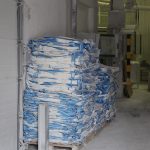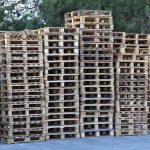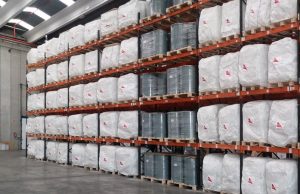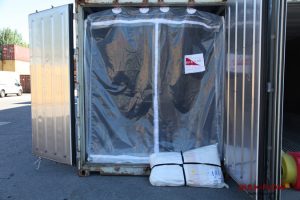Bulk container liners have been increasingly on the rise in the shipping and transportation industry for almost 4 decades as the product of choice in which to pack bulk solids to transport in maritime containers. As of the mid 1980s, the U.S. Department of Transportation (DOT) confirmed that the proven safety qualities in container liners make them a more feasible option to transport bulk products, including hazardous bulk materials, especially when compared to Big Bags.
The continued use of bulk container liners has also changed the way business is conducted in the logistics’ supply chain. Their positive impact in the industry affects sustainability, cost-efficiency, rules and regulations, customer satisfaction, and more.
Here’s a handy list of 10 benefits that bulk container liners add to improve bulk product handling processes:
- Packaging cost savings
- Increased productivity
- Decreased product waste
- Reduced product contamination
- Scratch storage off of your list – no need for a warehouse
- Easier inventory control
- Easy installation
- FDA-approved for food handling
- Increased payload
- Fits in standard ISO containers
Supply chain managers save an average $11.40 per MT in packaging every time that they choose container liners over Big Bags to pack bulk products for transportation.
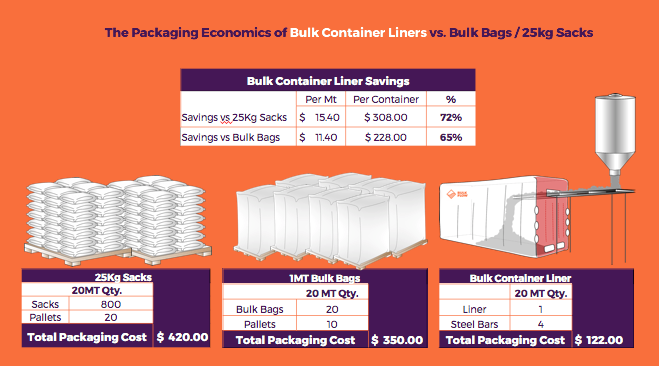
In addition, evaluate other savings benefits described below for labor, and other logistics considerations.
Bulk products packed in bulk container liners are handled with automated equipment that reduces the time it takes to load and unload a maritime container. Notice that savings are also applied to costs for this reason as manual labor hours and injury risks for the staff are considerably reduced.
For example, it takes 48 hours to load a container with Calcium Sulfat in a Big Bag and 48 hours to unload the container.

In contrast, it only takes 15-25 minutes to load a container with this bulk product packed in a container liner annd only 90 minutes to unload the same container.
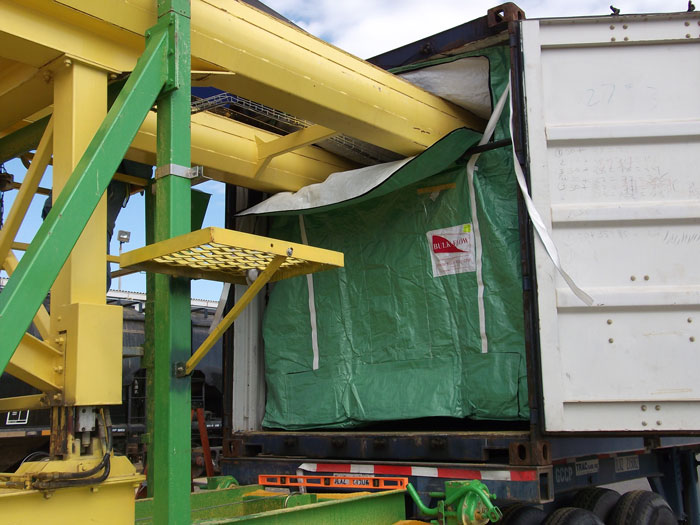
Whether a bulk container is loaded vertically or horizontally, the container liner keeps the entire product cargo securely enclosed at every stage of the process – loading, transport, unloading, and storing. Depending on the physical characteristics of the bulk solid, some particles can potentially fall out or spread in the air as it is loaded or unloaded. However, the rate at which that happens is significantly reduced with container liners.
The stronger materials and design applied to make Bulk-Flow container liners provide superior construction that make them puncture-resistant and thus eliminates the chance for possible leaks.
The equipment used to unload the product in the liner from the container also supports waste prevention. The bulk product can be transferred directly from the cargo liner into the silo for storage at the destination location.
Get more details on bulk handling equipment for loading, unloading and tilting standard ISO containers.
Also, check out the online demo of our recently released Fluidizing Liner for details on how it works and additional benefits for non-standard 30′ maritime containers.
Forget about water, dust particles, parts of a previous load and other materials mixing in with the product during freight, or even strands of the container liner’s fabric mixing with the bulk solid. Bulk-Flow high performance container liners are built strong to resist the potential damages from foreign agents and humidity that could compromise the integrity of bulk solids transported and delivered.
Deliver bulk products and materials directly to your clients’ silo location in a container liner. Unload a 20’ standard ISO container with a minimum 2-person crew to discharge the container without a forklift; use a pneumatic conveyor system, instead.
Container liners help improve the supply chain process because they streamline the loading and unloading steps. This has a direct impact on the need for inventory – since handling bulk solids during the loading and unloading processes takes less time, it also reduces the need to keep inventory of products held in storage. Keep in mind the inventory and warehousing also have negative effects, such as increased opportunity for products to spoil or be damaged in other ways. That kind of loss translates into profits going down the drain.
VERSUS
It only takes 8-10 minutes to install a bulk liner in a container. This is possible thanks to the container liners’ design. Some of our products include barless liners that also help optimize installation time and manpower required.
Read more about the patented Barless Liners by Bulk-Flow.
The FDA has approved container liners for food handling in the U.S. The FDA requires that the container liners be made of strong and durable co-extruded LDPE & LLDPE film, or high quality woven HDPE/PP fabrics. This type of construction can guarantee that the food commodities packed in the container liner are protected well.
Some of Bulk-Flow’s container liners made out of these materials include:
Maritime containers become more efficient when you utilize every single nook and cranny to fill it up with the bulk product. Since bulk container liners come in standard container sizes, can be filled to the brim, and closed securely, your client benefits directly from the optimized volume of product that can be transported. Eventually, this translates into fewer trips from the origin to the destination because you’ll use all corners of the container.
Bulk-Flow’s Single Bar Container Liners outperform other options in the marketplace, especially in the agriculture industry, as these allow complete use of the container’s full capacity.
Standard ISO containers come in 20’ and 40’ sizes. These are intermodal freight containers – they can be carried on a ship and transferred to an 18-wheeler truck and/or a train for rail transport without unloading. Bulk container liners are made-to-size to efficiently fit the standard sizes of maritime containers. They also come in practical smaller sizes to adapt to partial payloads that do not occupy and entire container, but they still fill the section of the container in which they are loaded.
Supply chain managers – consider these benefits to evaluate and compare available options before containerizing bulk materials. Use this list for your next cost-benefit analysis
Make sure that you speak to one of our experts at Bulk-Flow! Many of our industry solutions specifically address issues common in the bulk product handling business and are patented options that you can only get from our team.

